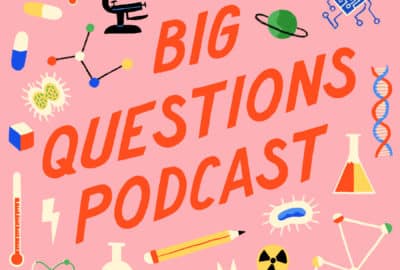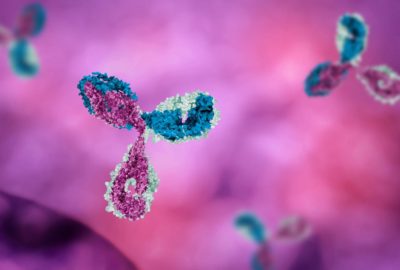How will climate change affect wine?
Wednesday 17th Jan 2024, 12.30pm
People have been interested in wine growing and quality vintages since the Roman times, but as the climate warms, what does this mean for the future of wine growers in the UK and beyond?
Andrew Wood, from the Department of Biology, has been studying the records of wine critics, which reveal much more than whether the bottle is a good vintage or not. The vintage can tell scientists what the growing conditions were like for the grapes in a given year – was it hot or cold? Was there flooding or drought? Was light more intense?
As the UK experiences more ‘BBQ summers’, we may see new grape varieties flourishing, producing new flavours of wine. But it’s not good news for all vineyards. Find out why in our latest podcast!
Emily Elias: While many people are probably focusing in on dry January, here at the
Oxford Sparks Big Questions Podcast, we are worried about what comes next for wine. We’re in a climate emergency, and winemakers are trying to figure out where does this leave them?
On this episode of the Oxford Sparks Big Questions Podcast, we’re asking, how will climate change affect wine?
Hello, I’m Emily Elias, and this is the show where we seek out the brightest minds at the University of Oxford and we ask them the big questions. And for this one, we have found a researcher whose working hours coincide with wine o’clock, like, all the time.
Andrew Wood: Hi, my name is Andrew Wood. I am a DPhil student here at the University of Oxford, and I study the interplay between climate change and wine quality.
Emily: Okay, so have you been a wine nerd for a really long time, or is this a new chapter in your alcohol appreciation?
Andrew: So, my story sort of started when I started my PhD, when I was looking for something to study. I didn’t really know much about alcohol, and especially not about wine And I really was looking for something that would be complicated but useful to study for the future. And so wine really offered that perfect interplay between the climate, things that take lots of time to grow and are really important in how they grow and what they do, but also that would change in the future in terms of climate. So I didn’t know much about wine. I started my wine journey, really four years ago now, and I’ve just been sort of evolving and developing with it ever since.
Emily: So you’ve only been looking at wine for about four years, but there is a long history of wine statistics that you’re diving into, right? Like, where does all this information come from?
Andrew: So, people have been interested in wine and wine quality as far back as the Roman times. So since then, people have always been comparing, much like people do now, of which wine is better than the other. And so what they’ve been looking to do is kind of compare and contrast and say a is better than b. And really, in the sort of 20th century, it was the start of the kind of quantitative comparison of wines, that is putting a number on it. Most famously, a guy called Robert Parker came up with the Parker scoring system, which was a 100 point scale, which rates wines as being 100 is the best, and maybe somewhere between 80 or 70 is the worst. And so, for each of these wines, there is this understanding that higher numbers means better and so if you’re selling wine as a merchant, if you’re consuming wine as a consumer, you can easily say okay, this one is better than this one. And they would do that for every wine, for every system. So say, for Germany or for France, or for regions within that, like Bordeaux or Champagne. And they would say, this is what’s going on in these areas and this is how it’s kind of developing.
Emily: Okay, so that’s about taste, though. How does that then translate into, something more scientific?
Andrew: What we can then do is, there’s lots of things you can sort of link to, but there’s this understanding that higher critic scores are better quality wines.
Emily: If you’re having a good wine or a good vintage, does that actually secretly translate into a type of language for you to interpret what’s going on in the climate?
Andrew: So that’s a really interesting question. The terms of a good year for wine. Critics have been sort of taking these logs about what’s good and what’s bad, and also what the vintage was like. And really, we can then look at these vintages and say, this is a climatological record of what the summer was like during that year.
Vintage, the term vintage, is all about what happened during a single growing year. For example, the 2023 vintage will be grapes that grew during the year 2023, were harvested in the year 2023, and the wine will have been made, in the latter half of that year. And then what we are then looking at is how that then develops.
So what we can say is that the vintage reflects the year. You can tell from the wine whether it’s a hot year, whether it’s a cold year. And you can then tell what’s going on within that growing season based upon the quality output. We can then link the kind of climate records that we have to those vintages and say, okay, what makes a good year for wine? What makes a bad year for wine?
Emily: So, in a weird, sneaky way, all this wine snobbery has led you towards a giant pool of data to understand the past.
Andrew: Absolutely. Yeah.
Emily: What about the future, then? So, if you have this pool of data that tells you what happened in the past, what does that tell us of what’s going to happen with climate change and the future of winemaking?
Andrew: So the first thing you have to do, is that you have to understand what’s happened in the past. Right? You know, what makes a good year for wine. You know, what makes a bad year for wine. So you look at when the wine is vulnerable to potentially heat or excessive flooding or lack of water in terms of drought. So you look at the peaks and the troughs and say, okay, what is predicted to happen in terms of those things? And then you compare that to historical records.
So you say, actually, okay, well, when we had drought, this changed the wine in this way, but actually when we had extreme heat, it changed it in that way. And when we had a hot summer or a cool winter, or all of those different factors, you could then start to piece together the story of what’s going to happen in the future.
So what we see when we look towards the future, is that there are predictions that are made by the sort of climatological centres of the world. There’s places like the Met Office here in the UK, but most countries have their own version of it. And really what they do is they say, okay, so this is what we predict the world is going to look like under different climate scenarios. And you can say, okay, well, during the summer, it’s going to look like this. In the winter, it’s going to look like this. So what we’ve found is really a very long winded way of saying the future is predicted to have sort of warmer, drier summers, and warmer, wetter winters.
And so what we have found from our predictions, looking just at the region of Bordeaux, is that this is quite a good thing for wine. Right. What predicted to happen is what we want to have to make a nice vintage wine. It’s what we want to expect to look at to make bigger, rounder wines, which generally give higher scores that people prefer more, and, can command higher prices or taste profiles. And so it’s all sort of leading into this developing picture of this warming climate and changes in water profile, which are, it’s important to emphasize a very bad thing for a lot of regions. It’s a very bad thing for a lot of wine growing regions. But for some of them that we’ve looked at, there may well be some sort of slightly more positive outlooks for the future.
So it’s a sort of patchy picture where some places it will get better, some places it will get worse. And it’s really all about kind of working out for a specific region, time and place, what’s going to happen.
Emily: So, then are there certain winemakers in certain regions that are freaking out and certain winemakers in certain regions that are feeling more comfortable with what’s going to happen?
Andrew: There is a lot of wine growing regions, in particular, those hot wine growing regions. If you think about sort of the Spanish ones, the Italian ones, and those sort of ones that generally sit on the edge of desert areas, those ones are the ones that are really struggling. They are already seeing the effects of lower water availability. They are seeing the effects of hotter summers, higher light intensities. And all of these change your wines and they change your profiles. It’s been researched at various parts across the world about changing varieties. So you can use those varieties that are generally grown in a more equatorial region, you can shift them polewards and that will mitigate some of the effects.
Emily: What do you mean, shift them polewards? Like, physically move them?
Andrew: So replant the areas that you want in those sort of regions. So, for example, if you take the area that we looked at, Bordeaux, they are looking at the Spanish varieties and what outputs they could take from the learnings of growing in hotter Spanish climates like Rioca, and grow those varieties in France instead.
That is obviously a sort of big, dramatic shift and a change, but also kind of contrast that with areas like the UK. We are seeing a massive expansion in the ability of the UK to grow wine. Winemakers in the UK are having much better summers. They are having barbecue summers are exactly what you’re looking for to make good wine. And so you can actually achieve the ripeness that you need within the grapes to make your wine. That you can actually then make fuller wines, not just sparkling, but also potentially reaching into red wines as well.
So there’s this whole sort of shift going on in the industry, generally in the northern hemisphere going north and in the southern hemisphere going south. And that obviously poses a lot of challenges to a lot of regions. In particular, those which are already quite close to their coastal regions. If you look, for example, in the Cape of South Africa or along the southern coast of Australia, where a lot of those wines are made, they can’t really move polewards. They can’t move towards the South Pole because there isn’t any land there to move to.
Emily: And I can’t imagine that would be a cheap production, to do of like, hey, I’m going to just take all my vineyards and transplant them a few miles up the road, down the road, whatever the road may be.
Andrew: Yeah, it’s not a cheap thing to do. And one of the greatest considerations when making wine is the age of the vines that you make them from. Generally, and this is a big generalisation, but generally, the older the vines, the better the wine. And so it’s really difficult to have old vines, which we… old vines is a term that’s generally wines that are made from vines that are 30 years old or more. And it’s really difficult to take that and say, okay, well, we want to have 30 year old vines in 30 years, where do we need to plant them? It’s much easier to do it in situ, but you then have to mitigate for everything that’s happening there.
Emily: And what if you don’t own the land?
Andrew: And what happens if you don’t own the land, or that land isn’t available, or it’s currently being grown for something else, or… Yeah, there’s a whole raft of things. Because you can’t plant vines in the middle of a city, for example, you can’t plant these things in regions which don’t currently have any slopes that are available, or that land is too flat, or it’s too salty, or it’s too different from what you need to make good wine.
So it’s highly variable, it’s highly complicated, and there’s this big global shift that’s going on in terms of what can be grown where. This is the same for everything. It’s not just vines and grapes, but it’s a sort of a global agricultural shift.
Emily: So what kind of conversations are being had right now about climate change amongst producers and people whose livelihood is hitched on the wine industry?
Andrew: There are a lot of conversations being had in the world about, well, really everything. So one of the greatest things is what is going on? So there’s this sort of huge undertaking of baseline understanding, both in terms of, okay, what is being affected, what isn’t being affected, what might be resistant or not resistant, and really what are the effects of all of the different aspects of growing wine?
You can change everything in a lot of regions in the world. You can look at things like changing irrigation practices, you can look at things like changing the canopy structure. So you trim your long trellises of vines into various different shapes and very different structures. So you can change all of those sort of things within the vineyard itself. But also then, as I mentioned before, you can talk about changing the varieties that you plant, if you’re going to plant, and when you replant those vines, you can talk about changing those. You can talk about changing when you harvest, is another big one. So there’s a whole science of phenology, which is all about when do different cycles occur within the year. So that is everything from when the buds break and when the plants start growing at the beginning of the year, right through to harvest, then after that into the leaves being dropped until it becomes dormant again.
So there’s this whole science of trying to understand these timings throughout the year. And when those change is determined by the climate again, and by the weather of that year, and you can then look at, okay, so if we harvest earlier, what’s the profile of the grape going to look like? Okay, well, if it’s slightly sweeter, or if it’s slightly less sweet, or if it’s more acidic, or if it’s less acidic, or if the taste compound within it changes well, you can then sort of try to pick at the optimal time and then carry that through to the winemaking process.
Emily: Okay, so there’s things that can be done. Obviously, you are an optimist, and so I would hope you are going to tell me no matter what happens in the future, there will be wine and it will be good wine.
Andrew: I certainly am an optimist, and that is possibly something to be wary of but there will almost certainly be wine in the future. I think that what will happen in the future is that the characteristics of each region, if you like a particular style or like a particular variety, I think that would change. And so the wines that we have at the moment will develop into the future and will have to change in accordance with the climate that they live in.
So that might be new varieties of grapes that might give you new flavours. That might be actually, if you want a wine that’s similar to the one you currently like, you have to look in a different place to get it. But I think that people really like wine. People will continue to enjoy to drink wine, and so there will always be that demand for people across the world to make and consume it.
Emily: This podcast was brought to you by Oxford Sparks from the University of Oxford, with music by John Lyons and a special thanks to Andrew Wood.
If you are freaked out about the future, get in touch. Tell us what you think of this podcast. Ask us a big question, we will try to get you the answer.
We are conveniently located on the internet @OxfordSparks. Or go to our website, oxfordsparks.ox.ac.uk. I’m Emily Elias. Bye for now.




